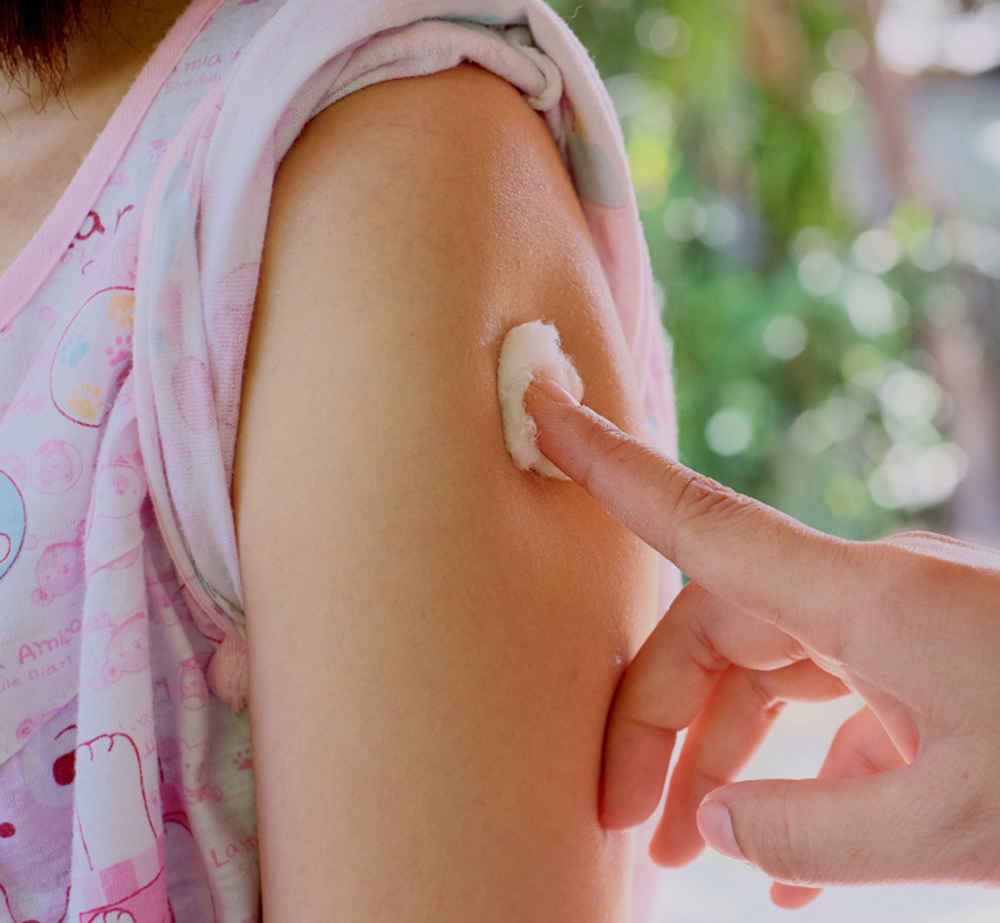410-721-2273
Tick Safety
Why are tick bites a concern?
A tick is a small brown bug that attaches to the skin and sucks blood for 3 to 6 days. The bite is usually painless and doesn't itch. Ticks can carry bacteria and viruses that can sometimes cause lasting illness. Wood ticks (also called dog ticks) are up to 1/2 an inch in size and can transmit Rocky Mountain spotted fever. At only the size of a pinhead, deer ticks are tiny, and can transmit Lyme disease.
While prevention is key, the good news is that ticks don’t pass along bacteria and viruses immediately. In order to be a concern, ticks need to be on the body for an extended period, usually a minimum of 18 to 24 hours, and show signs of being at least partially engorged (swollen). If a tick isn't engorged, the chances of it having had time to transit disease-causing organisms is very low.
How can I help prevent tick bites?
- Avoid places with thick vegetation and high grass.
- Follow the center of trails when hiking and don’t wander through the woods.
- When outdoors, have your child wear long-sleeved shirts tucked into his pants. The pants should be tucked into socks or boots. A hat may help, too. Wear light-colored clothing to make it easier to spot ticks before they reach the skin.
- Use insect repellent that contains 20 percent or more DEET on exposed skin.
- For less toxic alternatives to DEET, try picaridin, oil of lemon eucalyptus, and IR3535 (the active ingredient in Avon Skin So Soft Bug Guard and other products).
- Don’t use any repellents on infants less than two months.
- Apply products that contain the chemical permethrin to clothing and gear before going outdoors or wear clothing pre-treated with permethrin. Do not put permethrin on the skin because it quickly loses its effectiveness.
- Bathe or shower as soon as possible after coming home from being outside in order to wash off ticks before they bite.
- Inspect the body and remove any attached ticks as soon as possible (see instructions below); pay specific attention to the armpits, groin and genital areas, and comb hair with a fine-toothed comb, or have someone check the scalp.
- Treat pets with products that kill and/or repel ticks.
- While outdoors, use a buddy system to do tick checks every four hours, and also examine gear and pets often since ticks can hitch rides and then attach to a person later on.
- Carry and use a lint roller or a folded piece of tape on clothes, especially on socks, to pick up any ticks before they crawl onto your skin.
- Wash clothes in hot water after coming indoors and then dry them on high heat for 10 minutes to kill ticks after coming indoors; if clothes can’t be washed, put them in a dryer on low heat for 90 minutes or high heat for 60 minutes.
-
Because the bite is painless and doesn't itch, your child will probably not know it is there. Favorite hiding places for ticks are in the hair so carefully check the scalp, neck, armpit, and groin. Removing ticks promptly may prevent infection because transmission of Lyme disease requires at least 24 hours of feeding. Also the tick is easier to remove before it becomes firmly attached.
How do I remove the tick?
If you do find a tick, remove it immediately following these steps:
1) Use a pair of pointed tweezers to grab the tick as close to the head as possible, not on its body.
2) Pull up firmly away from the skin with a slow and steady motion. Don't twist or jerk the tick suddenly, or pinch the tweezers so tightly that they crush the tick.
3) Disinfect the skin with rubbing alcohol and wash hands with soap and water.
4) After removal, dispose of the tick by submersing it in rubbing alcohol, placing it in a sealed bag/container, wrapping it tightly in tape, or flushing it down the toilet. Never crush it with your fingers.
5) If you can’t take it out, call our office at 410-721-2273 to make an appointment for it to be removed.
The Centers for Disease Control and Prevention (CDC) advises that you do not need to keep a tick after removal for different reasons: If testing shows the tick contained disease-causing organisms, your child may not necessarily have been infected, but if he or she has been infected, symptoms will likely develop before the results of a tick test are available. You should not wait for tick testing results before beginning appropriate treatment.
Call our office immediately if:
(410) 721-2273
- You can't remove the tick or the tick's head.
- Your child has a fever, rash or flu-like symptoms within the 2 weeks after the bite.
Call 911
You May Also Like
Popular Resources | Make an Appointment • Locations • Refill Prescriptions





